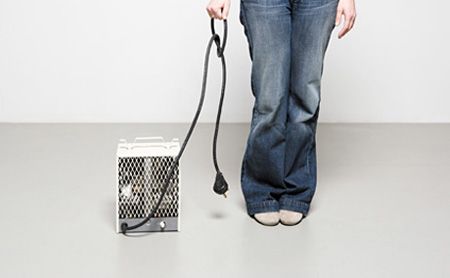Power up your veterinary clients' efforts for flea prevention
The need for parasite prevention might be clear as day for you, but some veterinary clients may still be left in the dark. Shed some light on the subject and get your patients the protection they need.

(Getty Images) It seems so simple to us, but one of the hardest things for clients to understand is proper flea prevention. Clients will often express their concerns over the efficacy of the current product they are using. They say that they still see fleas (and ticks, for that matter) on their pet.
Most people are led to believe that flea (and tick products) are deterrents, keeping the parasites off their pets completely. In reality, this is not the case. Preventives are the prevention of an infestation or the potential spread of disease.
But are we educating our clients in ways they understand? We've attended so many seminars that we often find ourselves surprised that the rest of the world isn't up to date on the latest information.
As a result, client compliance is still a daily struggle. Getting clients to use flea and tick control products every single month can be frustrating. "Oh, Fluffy just goes out to the yard to use the bathroom and then straight back in. He/she is never exposed to fleas or ticks." Or even better yet, the indor-only cats: "How could they possibly get fleas?" You've heard all these excuses too. And this is where we as veterinary professionals need to step in.
Power to prevention!
Here's even more on fleas (and ticks!) to make sure you've got clients covered when it comes to protection from parasites.
>> Check out the dvm360 flea control toolkit here.
>> Here is a client handout to dispell the myths of fleas.
>> And here is a handout to help clients handle a flea infestation.
>> Teach clients to detect and destroy flea hangouts in the home. Learn more here.
>> Ticked off about ticks? Find the dvm360 tick control toolkit here.
Interrupting the flea's life cycle
The life cycle of the flea is the most basic thing we can teach clients and one of the most important because, unfortunately, not one product available can terminate fleas at every life stage.
A quick refresh: There are four stages to the flea life cycle: egg, larva, pupa and adult. The former three actually make up approximately 95% of the flea population. So, make sure clients understand that killing adult fleas once their home is infested is not enough.
It helps to put things in basic terms. If an infestation occurs it can easily take at least three months, if not longer, to treat. Not only does the pet need to be properly treated, but the local environment (i.e., the home) needs to be treated as well. This means lots of cleaning and washing.
When cleaning, remind clients of the importance of vacuuming-not only the areas that we see but also under furniture, in the cracks of the floorboards and in-between couch cushions. Of course, vacuuming will not kill the fleas or eggs. The little creatures are resilient and will crawl right back out into the environment, on the hunt for a host again. Tell clients fleas love dark, warm and moist environments.
Flea eggs can and will fall off of their host, hatch, and can remain in the pupa stage for up to eight months, or until environmental cues trigger them of a possible nearby host. From there they will mature into an adult, and the infestation will continue. Remind clients that their yard may need to be treated as well, since this is usually where the fleas originated.
Infestation = $$$$
Altogether, the cost of treating a flea infestation can add up. There is the cost from treating the house and yard for months, not to mention the time spent cleaning. Win clients over with one line: Although the cost of some preventive products can seem like a lot, in the end it will be much cheaper than treating an infestation.
Most people don't know that fleas can be harmful to their pets' health. It is incredibly, uncomfortably itchy to be covered in fleas. For humans who've never been troubled by fleas, liken them to bed bugs-except these bed bugs bite you all day, every day, not just when you sleep.
Fleas spread bacteria and disease between animals and sometimes humans, such as bartonellosis. Even more often, we see an increase in anemia, especially in pets whose immune systems are already compromised such as the old, young and already ill.
Fleas are mini-vampires. They need blood in order to live and reproduce, which is their sole purpose. Luckily, none are big enough to cause much damage on their own. But in large enough groups, they can literally suck the life out of you!
Deep breaths ...
At the end of the day, the welfare of our patients is what's most important.
So the next time a client tries to dismiss or argue your recommendation for flea prevention, take a deep breath ... and educate. This is the best thing we all can provide as receptionists, assistants, technicians and doctors.
Chris Feaster, VMD, and Haley Switzer, veterinary assistant, are team members at Valley Veterinary Clinic in Buckingham, Pennsylvania.